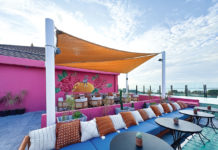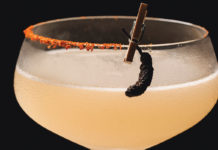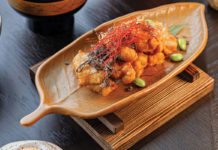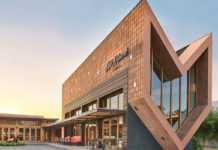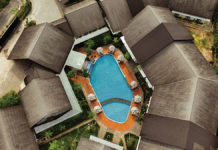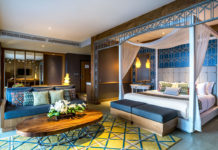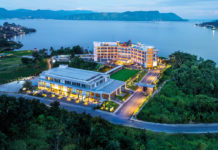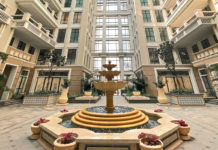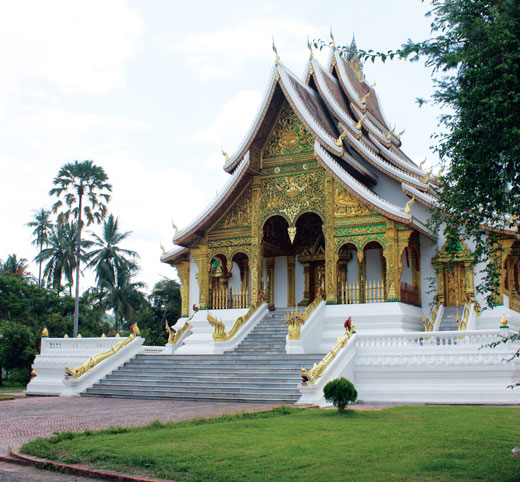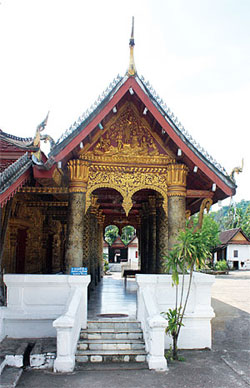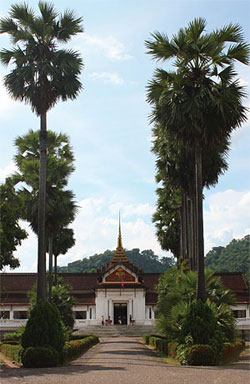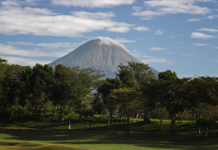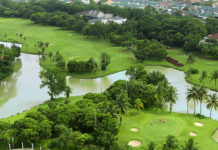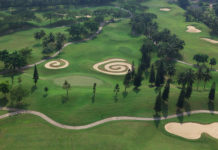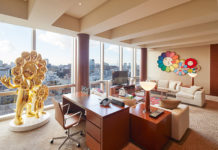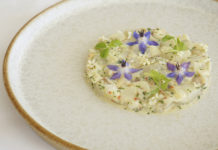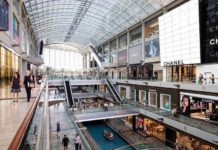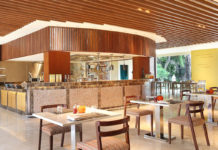Magical Luang Prabang in the fairytale kingdom of Laos
Lovely, lazy Luang Prabang, the former royal capital of Laos, is an enchantingly quiet town, dozing in ancient splendour on the confluence of the majestic Mekong and Nam Khan Rivers. This tiny city, which has been a UNESCO World Heritage site since 1995, neither teems with excitement nor seethes with intrigue. Life flows slowly here, like the lazy, muddy Mekong. Most of the locals are asleep by 10pm; they are a gentle, humble people who accept the mysteries of life without necessarily needing to understand them.
According to legend, the Buddha smiled when he rested here during his travels, prophesying that one day it would be the site of a rich and powerful capital city. And indeed, it became the royal capital of the Lan Xang Kingdom until King Phothisarat moved the administrative seat to Vientiane in 1545. For centuries the Luang Prabang Province was isolated from the rest of Southeast Asia by the mountainous territory, and it was only as recently as 1989 that Laos opened up to tourism. Today Luang Prabang is one of the richest and most visited provinces in the country, attracting an increasing number of visitors with its mix of gleaming temple roofs, crumbling French colonial architecture, stunning scenery and multi-ethnic inhabitants. It’s one of those rare destinations where you feel that this is the genuine article; even the hardest of hearts would have a struggle not to warm to the place.
The cuisine of Laos is simple, honest and earthy, relying much on the use of vegetables, herbs, game from the jungle, and fish from the Mekong. In the evenings, numerous vendors line the streets of Luang Prabang peddling the flavours of the Province – bright-red curries, grilled river-fish, homemade pork and herb sausages, “salads” of local vegetables, and steaming pots of rice, while charming cafes additionally serve an extensive selection of teas, coffees, Beer Lao, croissants, pies, cookies, and cakes. French cuisine is abundant, and the French bread stick can often be seen in the shopping baskets of locals heading home from the market.
The town’s many travel agencies and tour companies display blackboards offering anything from one-day river excursions to six-day jungle treks in the National Park. You can visit ethnic minorities, mighty waterfalls, weaving villages and shaman villages, trek to the old opium fields, scale peaks, or go white water kayaking. Don’t miss the Elephant Village, where the Luang Prabang Elephant Project supports elephants and humans to achieve a better life through tourism. Freed from brutal logging work, the elephants have been provided with a comfortable retirement and a healthier future. Bathing with these gentle giant beasts in the milky-brown waters of the Nam Khan River is a truly unforgettable experience.
Luang Prabang is so small that just about everywhere can be reached on foot or by bicycle. Every morning at dawn, the monks pad barefoot through the streets, while pious townsfolk place balls of sticky rice in their begging bowls. After witnessing this, you may wish to explore the temple architecture and the markets, or take a cruise on the river. At sunset, climb the grand stairway to Wat Chomis, a little temple at the top of the Phousi, a sacred rock hill, which rises up abruptly in the middle of town, looking directly down upon the elegant Royal Palace and out over the mountains in all directions.
As for accommodation, there are numerous guesthouses in the town, but for a luxurious option consider the Luang Say Residence (www.luangsayresidence.com), which resurrects the legacy of the 19th century French adventurers who drew the attention of the outside world to the beauty and charm of Luang Prabang. This immaculate five-star retreat has been fashioned on a luxurious outpost of the ‘Explorateurs’ glory days’, when the excitement of discovering the new cultures, along Asia’s ‘lifeline’, the mighty Mekong River, was considered the most fascinating experience.
Built in 2010, and featuring 24 suites within five pavilions and a main building, together with a dazzling swimming pool, the Luang Say Residence celebrates French colonial architecture. Here, the arched and bay windows fitted with louvre shutters, red roofs, white walls, rotund columns, black and white chequerboard floors, sweeping staircases, balustrades and intricately moulded plasterwork have been designed to portray and share the adventurous lavish lifestyles of the French colonists.
Tasty local delicacies created from favourite Asian recipes together with the signature dishes of a French brasserie are served at the Residence’s ‘La Belle Epoque’ restaurant, followed by après-le-dîner absinthe cocktails, which can be enjoyed in ‘1861’ – the terrace bar. The colonial era furnishings in this cosy lounge include studded leather sofas, marble tables, and traditional bistro chairs on the terrace. A library ‘fumoir’ corner adds a touch of literary culture to the intimate ambience, and during cooler months, the bar is warmed by a hearthside fire within a marble fireplace.
The sumptuous ‘Explorateur’ and ‘Pioneer’ Suites’ introduce spacious indoor living areas furnished with writing desks, sofas, stools or lazy chairs, and twin or four poster king-size beds draped in snowy netting. The rooms are embellished with gorgeous fabrics and elegant lamps that shed light on the historical framed prints that adorn the walls. Ensuite bathrooms are fitted with reproduction washstands, oversized soaking tubs and walk-in monsoon showers, while outdoor sitting areas are presented in the form of exterior lounges, open terraces or balconies – perfect for enjoying an early morning ‘chocolat chaud avec croissant et baguette’ against a magical backdrop of mountains, palm trees and tropical gardens.
When to go: The ideal season to visit northern Laos is November to mid-February, when there is little rain and the skies are reasonably clear.
Getting there: Direct flights to Luang Prabang from Bangkok, Chiangmai, Hanoi, Siem Reap, Udon Thani, and Vientiane with Lao Airlines, or flights from Kuala Lumpur to Vientiane with Air Asia. You will never want to leave.


